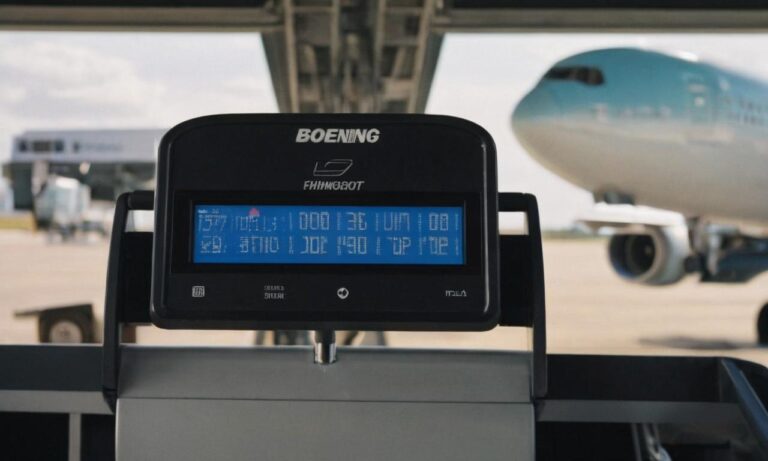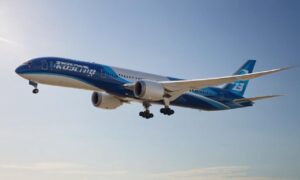Welcome to our comprehensive exploration of the weight of a Boeing 757. In the realm of aviation, where precision and engineering prowess are paramount, understanding the weight of an aircraft is a fundamental aspect. Let’s delve into the intricacies of how much a Boeing 757 weighs, unraveling the components and factors that contribute to its overall mass.
The Basics of Boeing 757 Weight
The Boeing 757, a stalwart of the skies, is a narrow-body twinjet airliner that has been a workhorse for various airlines worldwide. When discussing its weight, we need to consider not just the aircraft’s empty weight but also its maximum takeoff weight (MTOW) and the factors influencing these values.
Empty Weight of the Boeing 757
The empty weight, also known as the operating empty weight (OEW), encompasses the mass of the aircraft without any passengers, cargo, or fuel on board. This weight is a fundamental parameter, providing a baseline for understanding the aircraft’s intrinsic structure and components.
Boeing 757’s empty weight typically falls within a specified range, influenced by factors such as the type of engines installed, avionics, and other optional equipment. The advanced materials used in its construction contribute to its structural integrity while keeping the empty weight within efficient limits.
Maximum Takeoff Weight (MTOW)
The Maximum Takeoff Weight (MTOW) represents the heaviest weight at which an aircraft is certified to take off. For the Boeing 757, this figure is a culmination of various considerations, including the aircraft’s structural capabilities, engine thrust, and landing gear strength. The MTOW accounts for the maximum load of passengers, cargo, and fuel the aircraft can carry while taking off safely.
Understanding the MTOW is crucial for airline operators, as it dictates the aircraft’s performance capabilities and operational limits. The Boeing 757’s MTOW varies depending on its specific model and configuration, with different engine options and enhancements affecting this critical parameter.
Factors Influencing Weight
Several factors contribute to the overall weight of a Boeing 757. These include:
- 1. Structural Materials: The use of lightweight yet robust materials, such as advanced alloys and composites, plays a significant role in determining the aircraft’s weight.
- 2. Engine Configuration: The type and number of engines installed on the Boeing 757 can influence its weight, with more powerful engines often adding to the overall mass.
- 3. Avionics and Optional Equipment: The inclusion of state-of-the-art avionics and optional equipment, chosen by airlines based on their specific needs, contributes to the aircraft’s weight.
In conclusion, the weight of a Boeing 757 is a multifaceted consideration encompassing various elements that define its structure, performance, and operational capabilities. From its empty weight to the crucial MTOW, understanding these parameters provides insights into the aircraft’s engineering excellence. As the aviation industry evolves, the quest for efficiency and optimal weight management remains a driving force in the design and operation of aircraft like the Boeing 757.
Fuel Efficiency and Weight Management
While the empty weight and maximum takeoff weight (MTOW) are crucial metrics, fuel efficiency is a paramount concern in modern aviation. The amount of fuel an aircraft consumes is directly tied to its weight, impacting operational costs and environmental sustainability. Airlines and manufacturers constantly strive to strike a balance between structural integrity and fuel efficiency.
Wing Design and Aerodynamics
The design of an aircraft’s wings significantly influences its overall weight and performance. Engineers carefully consider factors such as wing span, aspect ratio, and winglets to optimize aerodynamics. Efficient wing design not only reduces drag but also contributes to fuel efficiency, underscoring the intricate relationship between weight and aerodynamic considerations.
Weight Distribution and Center of Gravity
Proper weight distribution is critical for the stability and maneuverability of the Boeing 757. Engineers meticulously calculate the center of gravity, ensuring that the aircraft maintains balance during various phases of flight. Deviations in weight distribution can affect the aircraft’s handling characteristics, emphasizing the importance of precise calculations in weight management.
Frequently Asked Questions
| Question | Answer |
|---|---|
| 1. What is the typical empty weight range of a Boeing 757? | The empty weight of a Boeing 757 typically falls within a specified range, influenced by factors such as engine type, avionics, and optional equipment. It can vary between different models and configurations. |
| 2. How does the number of engines affect the overall weight of the aircraft? | The type and number of engines installed on a Boeing 757 can impact its weight. More powerful engines often contribute to the overall mass, influencing both empty weight and maximum takeoff weight. |
| 3. Why is fuel efficiency important in aircraft weight management? | Fuel efficiency is crucial as it directly relates to operational costs and environmental impact. The weight of the aircraft influences fuel consumption, prompting a constant quest for optimal weight management to enhance efficiency. |






